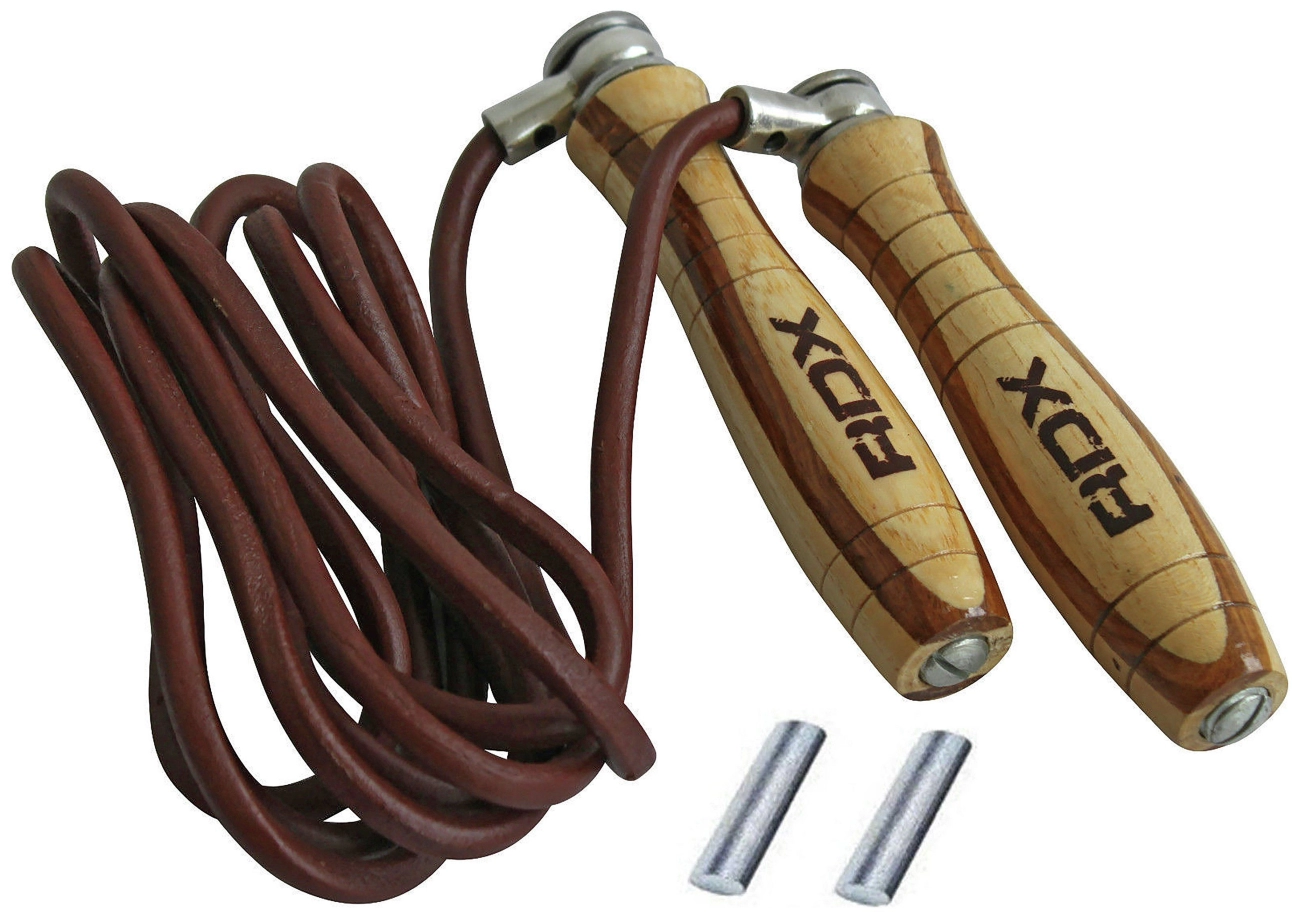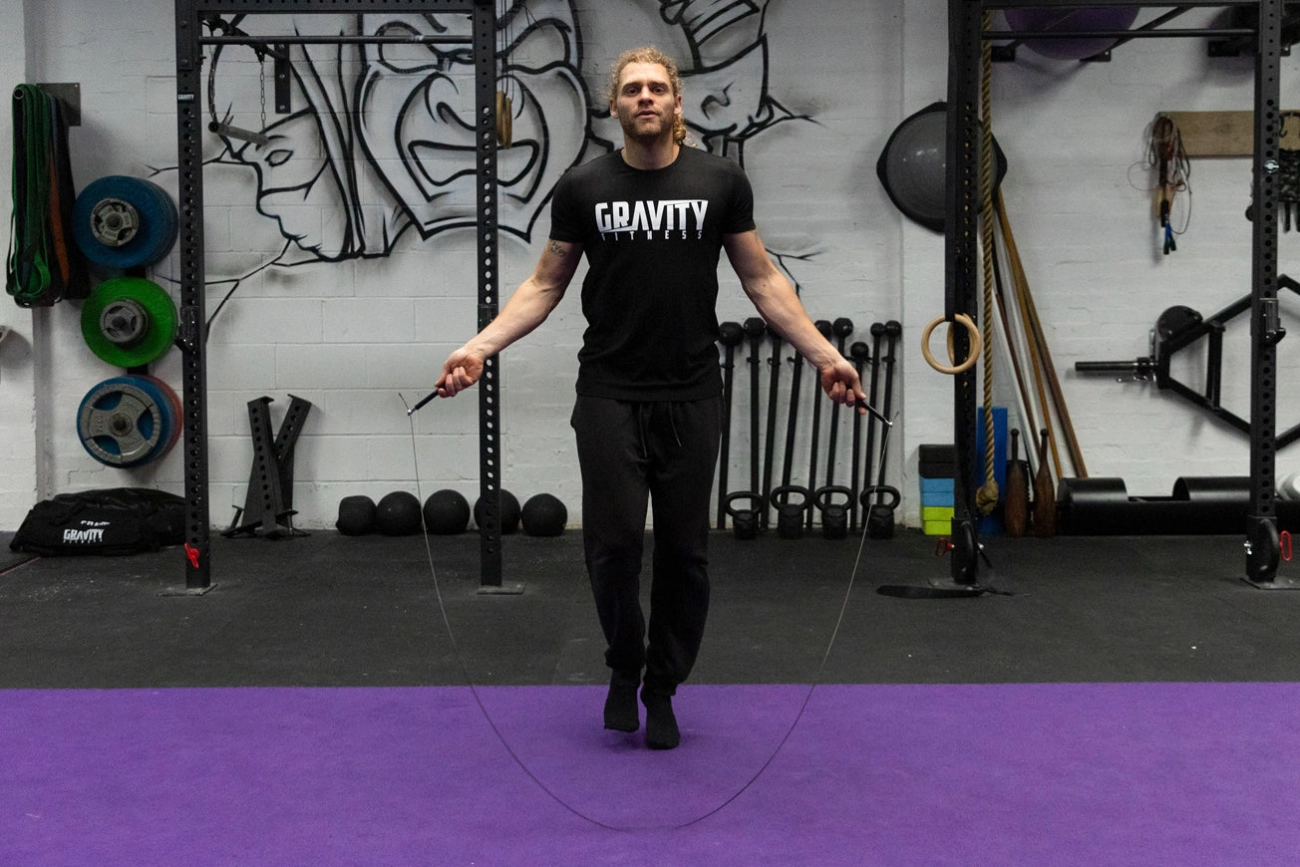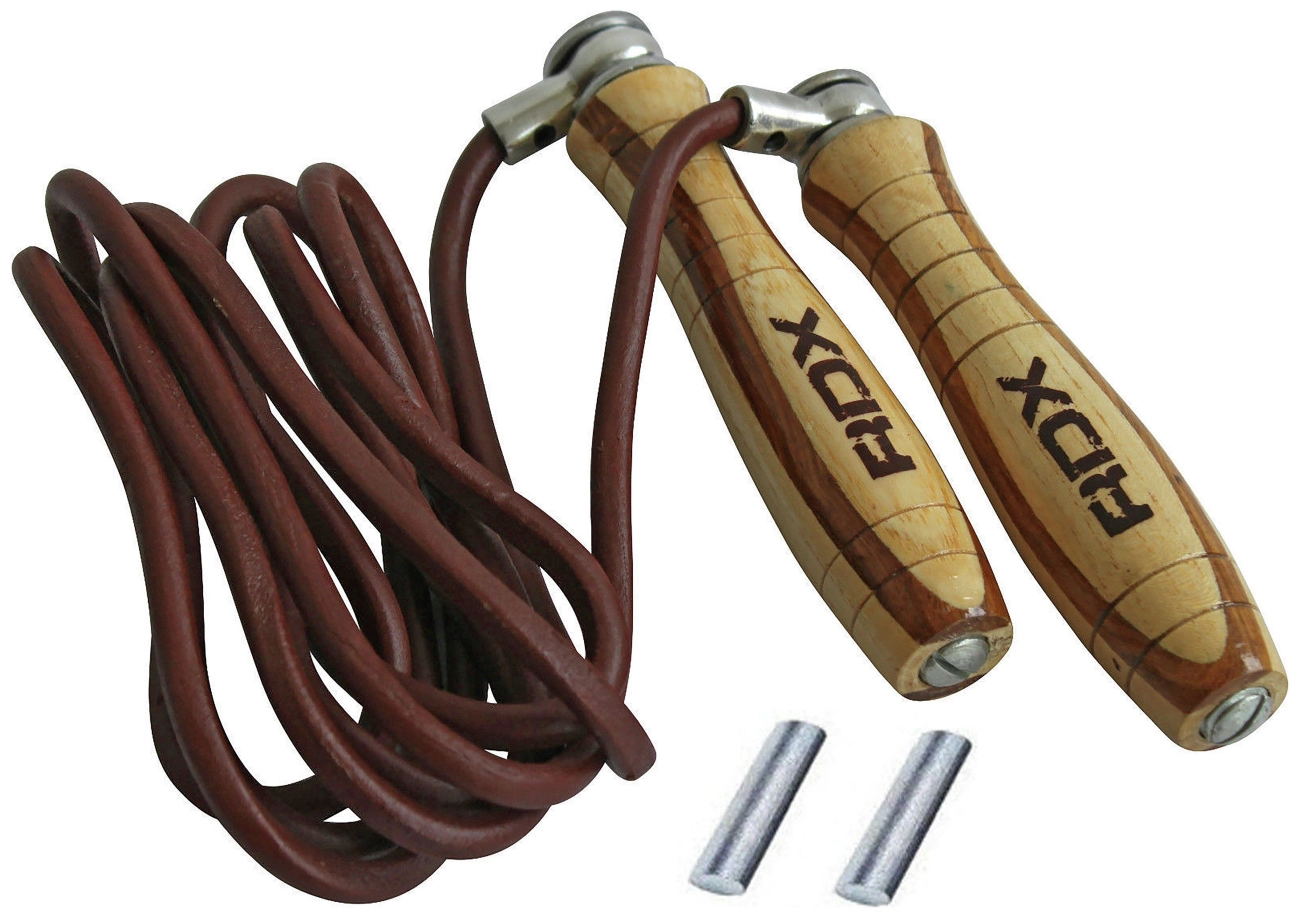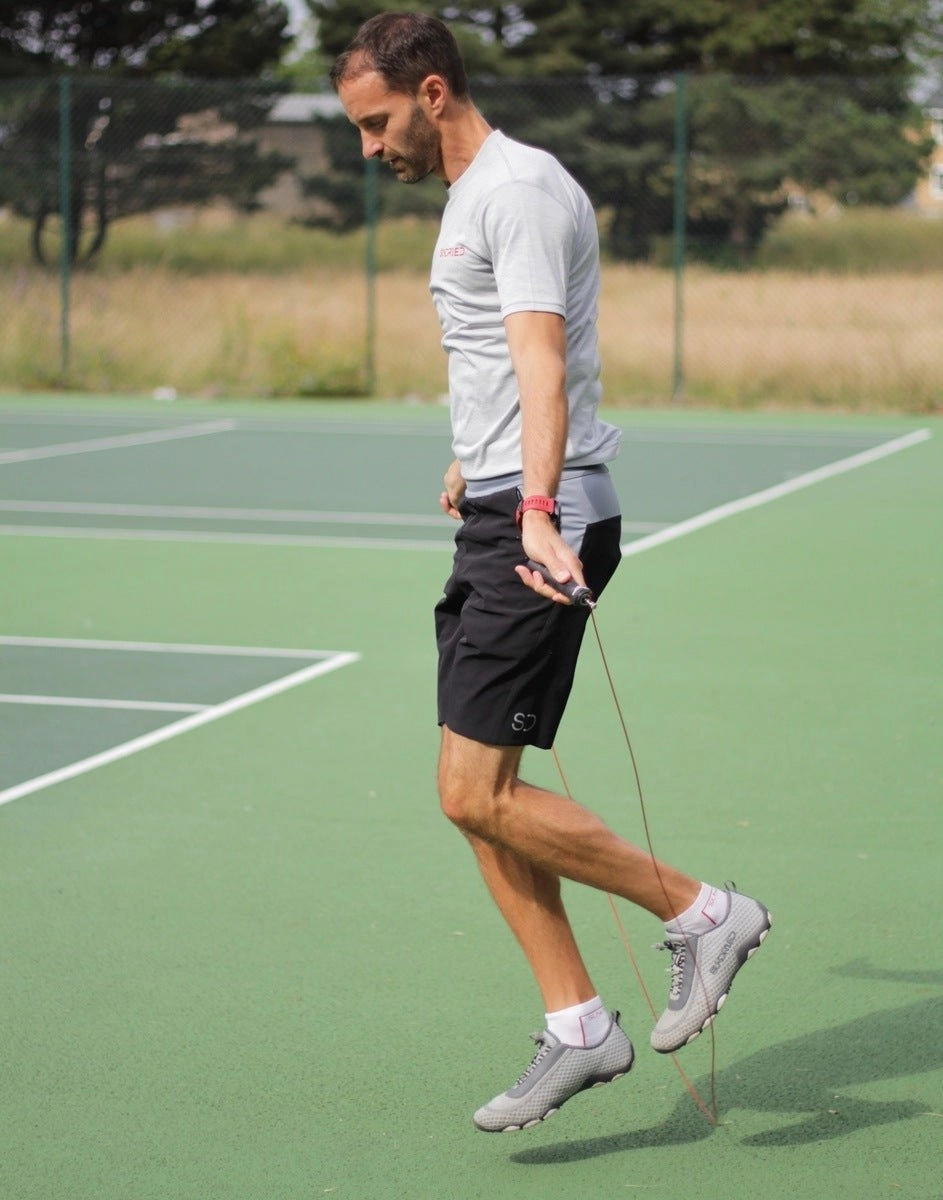If you’re looking to torch calories fast and boost your fitness with minimal equipment, Skipping Rope HIIT might just be your new best friend. Combining the power of high-intensity interval training with the simplicity of a jump rope, this workout blasts fat, builds endurance, and sharpens your coordination—all in a fraction of the time traditional routines take. Whether you’re a beginner curious about HIIT or a seasoned athlete searching for a fresh challenge, mastering skipping rope HIIT can seriously elevate your results and keep things exciting.
In this guide, you’ll discover what makes skipping rope the perfect tool for HIIT, how to structure your workouts, and which jump ropes give you the edge you need. Ready to jump in and accelerate your fitness journey? Let’s dive into everything you need to know about skipping rope HIIT!
What Is Skipping Rope HIIT Jump Rope HIIT Workouts Explained
If you’re wondering what exactly skipping rope HIIT is and why it’s gaining popularity, here’s a breakdown. HIIT, or high-intensity interval training, is a workout style built on short bursts of intense exercise followed by brief recovery periods. This approach pushes your body hard for a set time, then lets you catch your breath before repeating.
Skipping rope fits perfectly into HIIT protocols because it naturally combines speed, coordination, and cardio. You can blast calories with quick jump rope bursts, pause to recover, then repeat. A common format is 30 seconds of fast jump rope followed by 15 seconds of rest, repeated for multiple rounds. This pattern keeps your heart rate up and maximizes fat loss while building endurance.
How skipping rope works in HIIT
- Short intense bouts of jumping – think fast-paced jumps, double unders, or high knees
- Quick rest periods to recover without letting your heart rate drop too much
- Repeated sets that elevate metabolism and improve cardiovascular fitness
Incorporating skipping rope into your HIIT routine makes it efficient and engaging, perfect for skipping rope cardio workouts that burn fat, improve muscular endurance, and build coordination all at once.
Benefits of Skipping Rope HIIT Workouts

Skipping Rope HIIT offers powerful benefits that make it an excellent choice for anyone looking to boost their fitness quickly and effectively. Here’s why incorporating a jump rope HIIT routine into your workout plan is worth it:
Efficient Calorie Burn and Fat Loss
High-intensity interval training with a skipping rope torches calories fast. The combination of intense bursts of jumping and short rests rev up your metabolism both during and after the workout. This means you keep burning fat long after you’ve put the rope down. It’s one of the best skipping rope exercises for fat loss because it pushes your body to work hard but in a time-efficient way.
Cardiovascular and Muscular Endurance Improvement
Skipping rope HIIT isn’t just about burning calories; it’s a serious cardio workout that strengthens your heart and lungs. Regular sessions improve your cardiovascular endurance, making daily activities easier and boosting overall stamina. At the same time, your leg muscles, core, and even your arms get an excellent workout, building muscular endurance without heavy weights or machines.
Full Body Engagement and Coordination Boost
A big plus of jump rope HIIT workouts is the full-body engagement required. You’re not only jumping but coordinating your hands, feet, and rhythm. This improves balance, timing, and hand-eye coordination, which helps prevent injuries and makes you more agile. It’s especially helpful for athletes and anyone wanting a sharper, quicker body.
Time-Saving and Scalable Intensity
One of the best things about HIIT with a skipping rope is how time-efficient it is. You can get a serious workout done in just 10–20 minutes, perfect for busy schedules. Plus, you control the intensity by adjusting jump speed, rest times, or incorporating advanced moves like double unders. This makes it scalable for beginners to advanced jumpers, meaning anyone can progress at their own pace.
Suitable for All Fitness Levels
Whether you’re a newbie or a seasoned athlete, skipping rope HIIT can be adapted to fit your fitness level. Beginners can start with simple jumps and longer rest, while experienced jumpers can add complex moves or shorten breaks to challenge themselves. This flexibility means it stays effective and enjoyable as you get fitter and stronger.
For more detailed workout structures and tips, check out our guide on jump rope HIIT workouts.
How to Perform Skipping Rope HIIT Workouts Step by Step Guide

Warm Up Before Skipping Rope HIIT
Before jumping into any jump rope HIIT workouts, a good warm-up is essential to prevent injury and improve performance. Spend 5 to 10 minutes doing light cardio like jogging or brisk walking, combined with dynamic stretches such as arm circles and leg swings. You can also do some easy jump rope rounds at a slower pace to get your muscles ready and your heart rate up.
Proper Skipping Rope Technique and Form Tips
To get the most from your high-intensity interval training with skipping rope and avoid injury, focus on these form basics:
- Keep your elbows close to your sides and use your wrists to turn the rope, not your arms.
- Maintain a slight bend in your knees to absorb impact and protect joints.
- Land softly on the balls of your feet to reduce stress. Avoid heavy, flat-footed landings.
- Keep your core engaged and shoulders relaxed throughout the workout.
- Choose a rope length that suits your height: when you stand on the middle of the rope, handles should reach just under your armpits.
Sample Skipping Rope HIIT Intervals
Mix different skipping moves to keep your skipping rope cardio workout varied and effective. Here’s a simple interval example to get started:
- 30 seconds Basic Jump (two feet together)
- 15 seconds Rest
- 30 seconds High Knees Jump (lifting knees toward chest alternately)
- 15 seconds Rest
- 30 seconds Double Unders (rope passes under feet twice per jump)
- 15 seconds Rest
Repeat this cycle 3 to 5 times depending on your fitness level. You can swap in freestyle moves as you gain confidence.
Cool Down and Stretching After Your Workout
After your HIIT jump rope routine, cool down with 5 to 10 minutes of light walking or slow rope jumping to bring your heart rate down. Follow with stretches focusing on calves, hamstrings, shoulders, and wrists, which get a lot of work during skipping. Holding each stretch for 15 to 30 seconds helps improve flexibility and reduce soreness.
By warming up properly, using good form, combining varied skipping moves, and cooling down well, you’ll maximize benefits and keep your skipping rope HIIT training safe and effective.
Sample Skipping Rope HIIT Workouts for Different Goals and Levels
Skipping rope HIIT workouts are highly adaptable, making them perfect whether you’re just starting out or looking for a serious challenge. Below, I’ve outlined effective routines tailored for beginners, intermediate, and advanced levels, incorporating jump rope HIIT intervals to maximize fat loss, endurance, and coordination.
Beginner Skipping Rope HIIT Circuit 7 to 10 Minutes
Ideal if you’re new to skipping or HIIT training, this workout focuses on building fundamentals and endurance without overwhelming you.
- Warm-up: 2 minutes light jumping or jogging in place
- Workout: Repeat 3 rounds of the following
- 30 seconds basic jump (two feet together)
- 15 seconds rest
- 30 seconds high knees jump (lifting knees higher for more cardio)
- 15 seconds rest
- Cool down: 2-3 minutes stretching calves, quads, and shoulders
This routine burns calories effectively while improving your rhythm and coordination.
Intermediate Skipping Rope HIIT Workout 15 Minutes
For those comfortable with basic skipping and seeking to up the intensity, this workout blends speed work and brief rests for a solid cardio and muscular challenge.
- Warm-up: 3 minutes steady jump rope at moderate pace
- Workout: 4 rounds of
- 40 seconds fast basic jump rope
- 20 seconds rest
- 30 seconds alternating foot step jump
- 15 seconds rest
- 20 seconds quick high knees
- 10 seconds rest
- Cool down: 3 minutes stretching focusing on calves, hamstrings, and wrists
This routine boosts your cardiovascular capacity and leg endurance while keeping your jumps controlled and quick.
Advanced Skipping Rope HIIT Session 20 Plus Minutes
If you’re looking for a serious workout that challenges agility, coordination, and speed, incorporate double unders and freestyle moves into your HIIT jump rope routine.
- Warm-up: 5 minutes of easy to moderate skipping, mixing basic jumps and side swings
- Workout: 5 rounds of
- 30 seconds double unders (rope passes twice per jump)
- 15 seconds rest
- 30 seconds freestyle (criss-cross, side swings)
- 15 seconds rest
- 40 seconds high knees with fast pace
- 20 seconds rest
- Cool down: 5 minutes deep stretches for calves, shoulders, lower back, and forearms
This session maximizes calorie burn and functional fitness while improving coordination and timing.
No matter your level, you can scale the intensity by adjusting jump speed, interval duration, and rest periods. Using these sample skipping rope HIIT workouts aligns well with fat loss, cardiovascular health, and whole-body fitness goals — all packed into efficient, manageable sessions.
Choosing the Best Skipping Rope for HIIT Training
When it comes to Skipping Rope HIIT, the right jump rope can make all the difference. A quality rope helps you maintain speed, improves your form, and reduces injury risk, which is key during high-intensity interval workouts.
Why Material and Weight Matter for HIIT Efficiency
- Material: Durable materials like PVC cables or coated steel wires offer smooth rotation and long-lasting performance. They handle fast rotations without getting tangled, perfect for HIIT jump rope routines.
- Weight: Ropes that aren’t too heavy or too light work best. Lightweight ropes allow faster speed and better control, while slightly weighted ropes help build strength and timing. Choose based on your fitness level and goals.
Important Features for Skipping Rope HIIT
- Adjustability: Being able to adjust rope length ensures a perfect fit, which prevents tripping and lets you perform various moves—basic jumps, high knees, or double unders.
- Durability: A rope that stands up to sweat, friction, and repetitive motion will last through your toughest HIIT sessions.
- Comfortable Grips: Non-slip ergonomic handles help you maintain control even when your hands get sweaty.
- Smooth Bearings: Ball bearings or swivel mechanisms make the rope turn cleaner and faster, minimizing wrist strain and tangles.
Why JumpRopeWholesale Ropes Are Ideal for HIIT
JumpRopeWholesale offers a range of high-quality skipping ropes tailored for high-intensity interval training. Their ropes are known for:
- Strong, durable materials such as PVC and steel cable options built to last through intense workouts.
- Adjustable length with easy customization to fit all heights.
- Comfort grips designed for a secure hold, even in the middle of a sweat session.
- Smooth ball bearing technology for fast, tangle-free rotations—perfect for complex HIIT jumping rope routines.
Recommended Skipping Ropes for HIIT Workouts
- PVC Speed Rope: Lightweight and durable, great for beginners and speed-focused HIIT.
- Beaded Jump Rope: Offers better control and timing, ideal for those working on coordination and rhythm.
- Steel Cable Rope with Ball Bearings: Best for advanced routines with double unders and fast spins due to its smooth rotation and durability.
Choosing the right skipping rope isn’t just about preference—it directly impacts your efficiency and safety during HIIT. With JumpRopeWholesale’s selection, you get ropes built for American fitness enthusiasts who demand quality and performance in every jump.
Common Mistakes to Avoid During Skipping Rope HIIT Workouts
Skipping rope HIIT is an effective way to boost fitness, but doing it wrong can lead to injury or slow progress. Here are four common mistakes I see people make during jump rope HIIT workouts and how to avoid them.
Overjumping and Poor Landing Technique
Many beginners tend to jump too high or land heavily when skipping rope. Overjumping wastes energy and wears out your legs faster. Poor landing technique can cause joint pain, especially in knees and ankles.
- Keep jumps low and light, just enough for the rope to pass under your feet.
- Land softly on the balls of your feet, not flat-footed or heels.
- Keep your knees slightly bent to absorb impact and avoid stiff legs.
- Focus on smooth, controlled jumps instead of speed or height.
Ignoring Rest Intervals and Overtraining
HIIT is about working hard then recovering. Skipping rest or trying to push through without breaks can lead to burnout, reduced performance, and injuries.
- Stick to rest intervals like 15–30 seconds between active jumps.
- Listen to your body; quality beats quantity.
- Overtraining can cause excessive fatigue and slow progress, so schedule rest days or low-intensity activities.
Using Wrongly Sized Ropes Causing Inefficiency or Injury
The right jump rope size is crucial for an efficient HIIT session. A rope that’s too long or too short throws off your rhythm and increases the risk of tripping or improper form.
- To measure, stand on the center of the rope with one foot. The handles should reach your armpits.
- Adjustable ropes are great for beginners or if sharing ropes among family.
- Too heavy ropes can tire you quickly if you’re not used to them, while ultra-light ropes require advanced skill.
Failing to Warm Up or Cool Down Properly
Skipping rope HIIT raises your heart rate quickly, so jumping straight in without warming up can increase injury risk. Similarly, skipping cooldown and stretching after high-intensity sessions slows recovery.
- Always start with a 5-minute warm-up, like brisk walking, light jogging, or gentle rope swings.
- End with a cooldown: slow jump rope or walking for a few minutes, followed by stretching calves, hamstrings, and shoulders.
- This approach improves flexibility and reduces muscle soreness.
By avoiding these mistakes, your skipping rope HIIT workouts will be safer, more effective, and more enjoyable. Proper form, pacing, rest, and the right equipment make all the difference in your fitness journey.
Frequently Asked Questions about Skipping Rope HIIT Workouts
Can skipping rope HIIT help me lose weight quickly
Yes, skipping rope HIIT is great for fast fat loss. Because it’s a high-intensity interval training routine, it ramps up your heart rate and keeps your metabolism active even after you finish. This means your body burns calories not just during the workout but for hours afterward. The combination of cardio and muscle engagement during jump rope HIIT maximizes calorie burn in a short amount of time, making it one of the most efficient fat loss workouts out there.
How often should I do skipping rope HIIT workouts
To see steady progress, aim for 3 to 4 sessions per week. Since HIIT is intense, your body needs rest days or lighter activity days to recover and avoid burnout or injury. Beginners might start with 2 sessions weekly and gradually increase. More advanced athletes can go up to 5 times weekly but should listen to their body to prevent overtraining. Consistency combined with proper rest is key for long-term results.
What’s the best surface for skipping rope HIIT
The best surface is a smooth, flat, and slightly forgiving one to protect your joints and make jumping easier. Ideal options include:
- Hardwood or laminated wood floors
- Rubber gym mats or fitness flooring
- Smooth concrete or asphalt (avoid rough or uneven pavement)
Avoid hard surfaces like bare concrete or tile without a mat, as these can increase impact on knees and ankles and cause discomfort or injury over time.
Can I do skipping rope HIIT indoors
Absolutely, skipping rope HIIT works well indoors as long as you have enough space overhead and around to swing the rope freely. Many people use basements, home gyms, or spacious living rooms for their workouts. Using a high-quality jump rope with smooth bearings helps reduce noise and unwarranted wear on floors. Just be sure to have a non-slip mat or surface to maintain safety and comfort during your session.
Skipping rope HIIT is a flexible and efficient workout option that fits different goals, schedules, and indoor or outdoor environments, making it a perfect choice for busy Americans seeking quick fitness gains.



